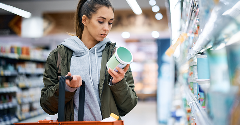News
European wine industry suffers another blow in beleaguered year
4 Sep 2020Despite demand for alcohol, including wine, surging during the pandemic, the global wine industry has been suffering as a result of trade restrictions, labor shortages, and now, weather woes. In Italy’s northern Veneto region, a violent storm at the end of August ravage 5% of the regions vineyards, causing €6 million worth of damage and a wine season to go up in smoke for many vintners, Forbes reported.
This blow to the European wine industry, within which Italy is the top producer, comes only weeks after Tuscany announced its grape harvest was at risk due to limited seasonal workers arriving, most of them from Eastern Europe to whom many borders are closed. To help combat this looming threat, Tuscany's Fedagripesca Confcooperative petitioned the Italian government for agricultural vouchers to lure students, restauranteurs and the unemployed to work short-term on the vineyards for harvest.

These strains in the European wine industry build on an already troubled outlook. In 2019, Italian wine production fell 15% compared to 2018, CNBC reported. Numbers from IWSR forecast Italian still wine volumes to drop yet another 9.54% in 2020. Sparkling wine volumes from the country are predicted to fall by 16.86%.
While it may stand to reason that the increase in at-home wine consumption will help buoy a battered industry, the numbers do not support this hopeful prediction. In the U.S. shuttered restaurants and bars previously made up the majority of American’s alcohol indulgence, and as a result of limited capacity for dining out, domestic wine sales dropped 5% to $48 billion between June 2019 and June 2020, according to data from market research firm Wines Vines Analytics. In Italy as well, over 50% of the country’s still wine consumption happens in bars which have remained shut during the country’s strict lockdown, per IWSR data reported by CNBC.
This economic crisis is not unique to the European wine industry. Production in the U.S., where California accounts for 50% of the nation’s wine industry revenue, suffered dramatically due to wildfires and labor shortages. The result is that the loss of wine revenue for the U.S. is anticipated to ring up at $5.94 billion, according to a report from the Sonoma State University School of Business and Economics. In 2019, the national wine economy generated $8.5 billion in revenue. Individual wineries are expected to lose between 36% and 66% of their revenue this year
Related news

Value is a top priority for today’s F&B consumers
3 Apr 2025
Research from global consultancy Hartman Group suggests there are six core values that brands must tap into to connect with consumers’ needs.
Read more
Future F&B flavours favour exploration and explosive taste profiles
25 Mar 2025
Exploration and experimentation will define the future of flavour, according to Mintel, as consumers seek out taste profiles and textures that offer an adventurous eating experience.
Read more
Global consumers enjoy food less and perceive it as less healthy
20 Mar 2025
Enjoyment of food and its perceived healthiness is dwindling among most global populations, according to findings from Gallup and Ando Foundation/Nissin Food Products.
Read more
Plans to abandon mandatory Nutri-Score labelling ‘would be a step back’
17 Mar 2025
Critics have slammed reports that mandatory Nutri-Score labelling is to be abandoned as “a step back” that puts citizens’ health at risk.
Read more
Coca-Cola enters the prebiotic soda category
12 Mar 2025
Coca-Cola is leaning into nostalgia and the growing popularity of “gut-healthy” sodas to launch a line of prebiotic sparkling beverages.
Read more
Is the price of a sustainable and healthy diet… unsustainable?
4 Mar 2025
Healthier foods are more than twice as expensive per calorie as less healthy foods, with healthier food increasing in price at twice the rate in the past two years.
Read more
Does calorie labelling lead to reduced consumption?
27 Feb 2025
Calorie labelling of food products leads to a small, but consistent, reduction in the number of calories consumed, a study suggests.
Read more
Brands, retailers, and countries remain divided over Nutri-Score labels
30 Jan 2025
Europe's supermarkets and manufacturers are far from aligned over a standarised approach to nutrition labelling. Some welcome the non-mandatory Nutri-Score labels with open arms, while others have “considerable concerns”.
Read more
EU Parliament passes stricter packaging rules
20 Jan 2025
The European Parliament voted to approve updates to the packaging and packaging waste regulation, including enforceable re-use targets, limits on certain single-use packaging types, and restrictions on the use of PFAS “forever chemicals”.
Read more
Louis Drefyus Company powers on in plant-based with BASF ingredients acquisition
17 Jan 2025
BASF has agreed to sell its food and health performance ingredients business to Louis Dreyfus Company (LDC).
Read more